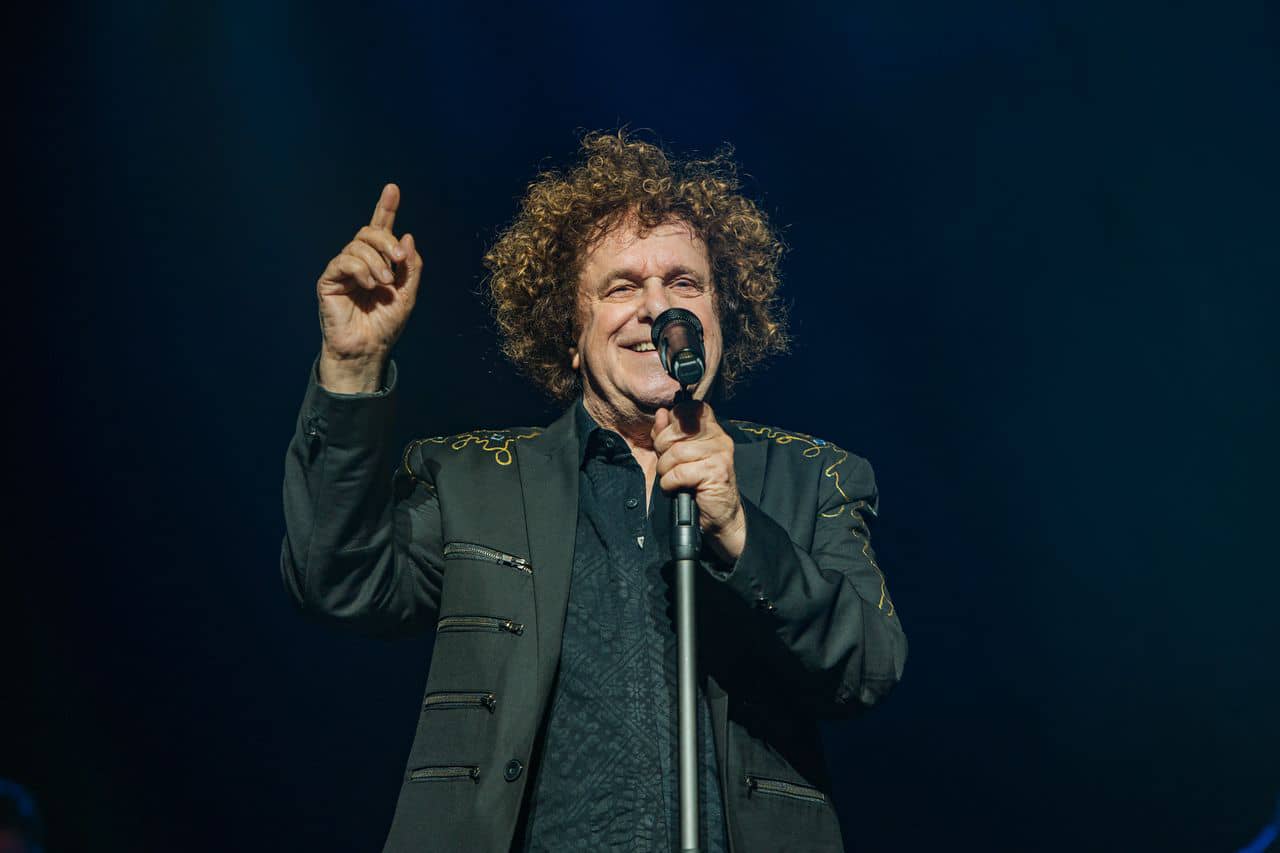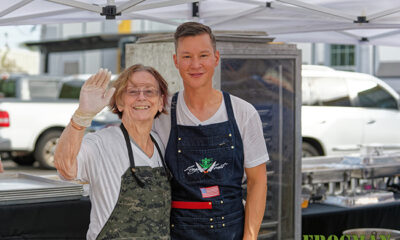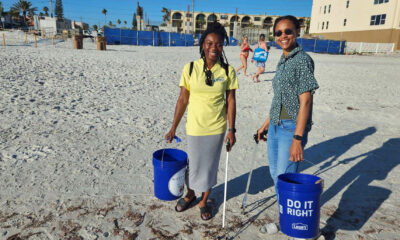Create
The Catalyst interview: Leo Sayer

American music fans will remember singer Leo Sayer from the soulful ballad “When I Need You” and the uptempo “You Make Me Feel Like Dancing,” ubiquitous on the radio, and No. 1 hits, in the mid/late ‘70s. They might have a fondness for “Long Tall Glasses (I Can Dance)” or “More Than I Can Say,” both of which landed in the Top Ten. He even did The Muppet Show.
Times and tastes change, of course, and Sayer and the U.S. pop charts parted ways in 1981. Although he has never stopped writing songs and making records, he played his last American show, to date, around 30 years ago.
Ask someone in his native Great Britain about Leo Sayer, however, and they’re likely to rattle off a list of beloved hits, including all those named above plus “The Show Must Go On” (over here, Three Dog Night almost topped the charts with a watered-down cover version), “Moonlighting,” “I Can’t Stop Loving You,” “How Much Love,” “Thunder in My Heart,” “Have You Ever Been in Love” and “Orchard Road.”
For reasons known only to him, Sayer – who lives in Australia these days – just feels like coming back to America to play a handful of shows. And the very first one happens to be Tuesday (March 21) at the Central Park Performing Arts Center in Largo. Find tickets here.
The Catalyst spoke with Sayer via Zoom from his home in New South Wales. He was engaging, entertaining and quite clearly looking forward to greeting old friends and fans, and singing all those songs one more time.
On his beginnings.
 I went to art school, after school, and of course everybody was playing blues at that time. I was a blues singer and primarily a harmonica player. So I played with a lot of bands – Zoot Money, and Graham Bond, all of these guys who were around in the ‘60s. Alexis Koerner. These were all the guys that were really behind the Rolling Stones, and the Yardbirds and all of those bands. I would frequently do gigs with Alexis Koerner, just stepping in and playing harp … I’d look around and my bass player was Bill Wyman. My drummer was either Charlie Watts or Ginger Baker. It was all new, so there weren’t any big gigs to play – it was all pubs, bars, small music clubs in the center of London. Mainly houses and bars; you’d turn up someplace to have a bite to eat and a beer, and you’d find out that the Rolling Stones were playing in the room that night.
I went to art school, after school, and of course everybody was playing blues at that time. I was a blues singer and primarily a harmonica player. So I played with a lot of bands – Zoot Money, and Graham Bond, all of these guys who were around in the ‘60s. Alexis Koerner. These were all the guys that were really behind the Rolling Stones, and the Yardbirds and all of those bands. I would frequently do gigs with Alexis Koerner, just stepping in and playing harp … I’d look around and my bass player was Bill Wyman. My drummer was either Charlie Watts or Ginger Baker. It was all new, so there weren’t any big gigs to play – it was all pubs, bars, small music clubs in the center of London. Mainly houses and bars; you’d turn up someplace to have a bite to eat and a beer, and you’d find out that the Rolling Stones were playing in the room that night.
So I was around then, but I wasn’t serious about getting into the music business. I was a graphic designer, a commercial artist. I did record covers for Humble Pie and covers for Bob Marley. And nearly everybody I knew got ripped off in this horrible business.
I had a nervous breakdown. I was a graphic designer and I couldn’t get anybody to pay me. So I ended up on a houseboat in my hometown, Shoreham-By-Sea, and hiding from my parents. Working in a factory, moving car parts around during the day and playing in a blues band at night. We went to an audition, and the guy holding the audition was my first co-writer, David Courtney. He’d played drums for a guy called Adam Faith. And Adam and David and me became this wonderful triumvirate that were determined to make Leo Sayer a star. My real name was Gerard, but I became Leo. My hair was mad, massive and so big in those days. They said “He looks like a little lion.” There was a TV program on, a cartoon, called Leo the Lion. “Let’s call him Leo!”
On the Who’s Roger Daltrey, an early supporter.

“Silverbird” (1973) was Sayer’s debut album.
We recorded the last four tracks of the Silverbird [1973] album at the studio Roger had built in his home. And he was there all the time. “The Show Must Go On” was cut there. One day he just said “Look, I really like these songs. You should give me some.” David and I were very prolific at this time, we were turning out two or three songs a day. We were hungry, hungry songwriters. So we gave him, basically, what was my second album, with “Giving it All Away” and “One Man Band.” Songs that we were planning to do later on. And he took them all.
I had a band at the time, Patches. And we were doing a gig locally, near to Roger. And Roger said “Right. I’ve seen your equipment. You can’t do this.” So we went to Mitch Mitchell’s house – the drummer with Hendrix. He was a mate of Roger’s who lived just up the road. And we dug out Hendrix’s old P.A., which was huge.
And Roger roadied the gig. Every time I’d try and pick up a cabinet, Roger’d say “Get off. Get off.” And he’d lift it. And he put the whole thing up, mixed the show. And everybody turned around and said “That guy mixing looks Roger Daltrey, doesn’t he?” “Nah, couldn’t be.”
On his early appearances in a French “Pierrot” costume and whiteface makeup.
I always personified myself as this white Pierrot guy in this French movie Les Enfants du Paradis. This guy was my hero. He never said a word. Jean-Louis Barrault, an amazing actor. And Roger Daltrey’s cousin, an album cover photographer, took the photo for the back cover of Silverbird. And I thought “Did I really think this through? I’m going to look like a fuckin’ idiot.”
But when I finally looked in the mirror I went “Yes.” Because I didn’t have much confidence. I was very, very shy. I couldn’t stand onstage for five minutes, I’d be hiding behind the mic, I wouldn’t know what to say. But wearing this mask, I could get away with anything.
In America, the audience was in shock – “who is this guy?” But it made them listen to the lyrics. In England, this thing was happening. Peter Gabriel with Genesis, before anybody saw him, he wore the most peculiar costumes. In a way, I suppose what was happening, in this British movement, was bringing theater into rock. And I suppose we inspired Alice Cooper and Kiss.
On moving to L.A. to work with producer Richard Perry (Ringo Starr, Carly Simon, Barbra Streisand).
I’d come over and done my live show, and people would love it, but we needed that missing element. “Long Tall Glasses” and “One Man Band” both hit the lower regions of the charts. But my manager Adam, after I’d made the album Another Year, said “no, it’s not good enough. You need to go to the United States. You need to become an American artist.” And he knew that I could do it – whenever I’d been over there, at the shows people had gone wild.
 Richard Perry and I didn’t have a lot in common. What we did have in common was we both loved soul music. And he kind of saw me like Boz Scaggs or Daryl Hall, a white boy who sang soul. We went into the studio and we cut three or four Motown tracks. We did a few songs, and that started the whole thing.
Richard Perry and I didn’t have a lot in common. What we did have in common was we both loved soul music. And he kind of saw me like Boz Scaggs or Daryl Hall, a white boy who sang soul. We went into the studio and we cut three or four Motown tracks. We did a few songs, and that started the whole thing.
And while his song-finders were bringing in songs – “When I Need You” was one of them – I was also really gluing into these fantastic musicians that he brought along: Jeff Porcaro, Willie Weeks, Ray Parker Jr., Larry Carlton, Michael Omartian, John Barnes. Incredible. We were all getting’ together socially, although Richard didn’t know it. And we were starting to jam together. So when we got back into the studio, for the second set of sessions, he noticed that we were just going off on our own.
He recorded something we were going off on our own on. And that happened to be “You Make Me Feel Like Dancing.” I didn’t realize he recorded it – it was just a jam while the tapes were being changed.
He played it back for me and he said, “Now that’s your hit. If you could just find a chorus for it.” And this guy called Vini Poncia and I came up with the chorus – in the five minutes Vini had before he had to leave the studio to see his chiropractor! So the whole song took 20 minutes.
On hearing hits and making records.
In that early time when I was in the background, I could hear hits. I could hear what Ray Davies was doing, and what Lennon and McCartney were doing. I kind of knew the science of it. I found out I had perfect pitch. And my school of rock, if you like, was hanging on the shirttails of people like Richard Perry and Arif Mardin, and all the great engineers that they worked with. And they’d never let you touch the board, but watching them work I started to learn how to do things. So today, I produce and engineer my records.
I didn’t really want to be a pop star, because everybody I saw was getting ripped off. I eventually got ripped off anyway.
On his voice, which has held up remarkably well.
When everybody else was doing coke, and too much weed, and everything like that, I must admit I imbibed, but very lightly. And I never drunk myself stupid. I’m a terrible drinker anyway. And I see a lot of my contemporaries really raved and lived that life.
But Roger Daltrey told me right from the start – he’s still relatively healthy for his age, and still has that voice – he said “Leo, you’re going to be the most boring guy in the band. You’re going to be the guy who goes to bed early. Doesn’t party with the rest of the dudes. Doesn’t take all the drugs that the other guys are taking…” ‘Cause Roger never took anything …. he said “you’re going to be the boring guy that everybody else will call the lightweight. But in 30, 40 years’ time, you’re gonna have the same voice.” And he was right.
And the last time I talked with Roger, this is what we talked about. He said “Didn’t we do the right thing?”








Scott Simmons
March 19, 2023at3:12 pm
Great piece. Thanks Bill!